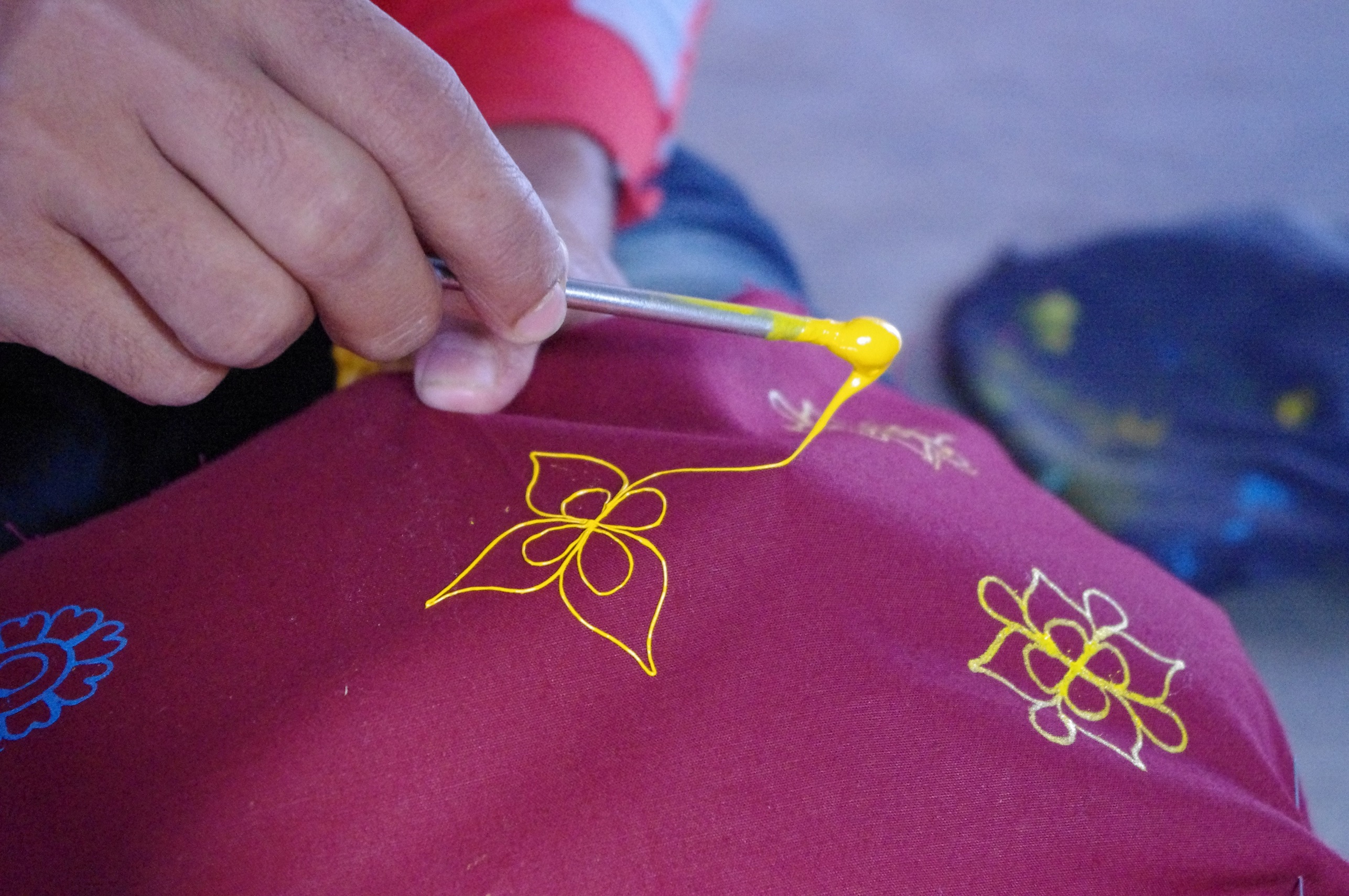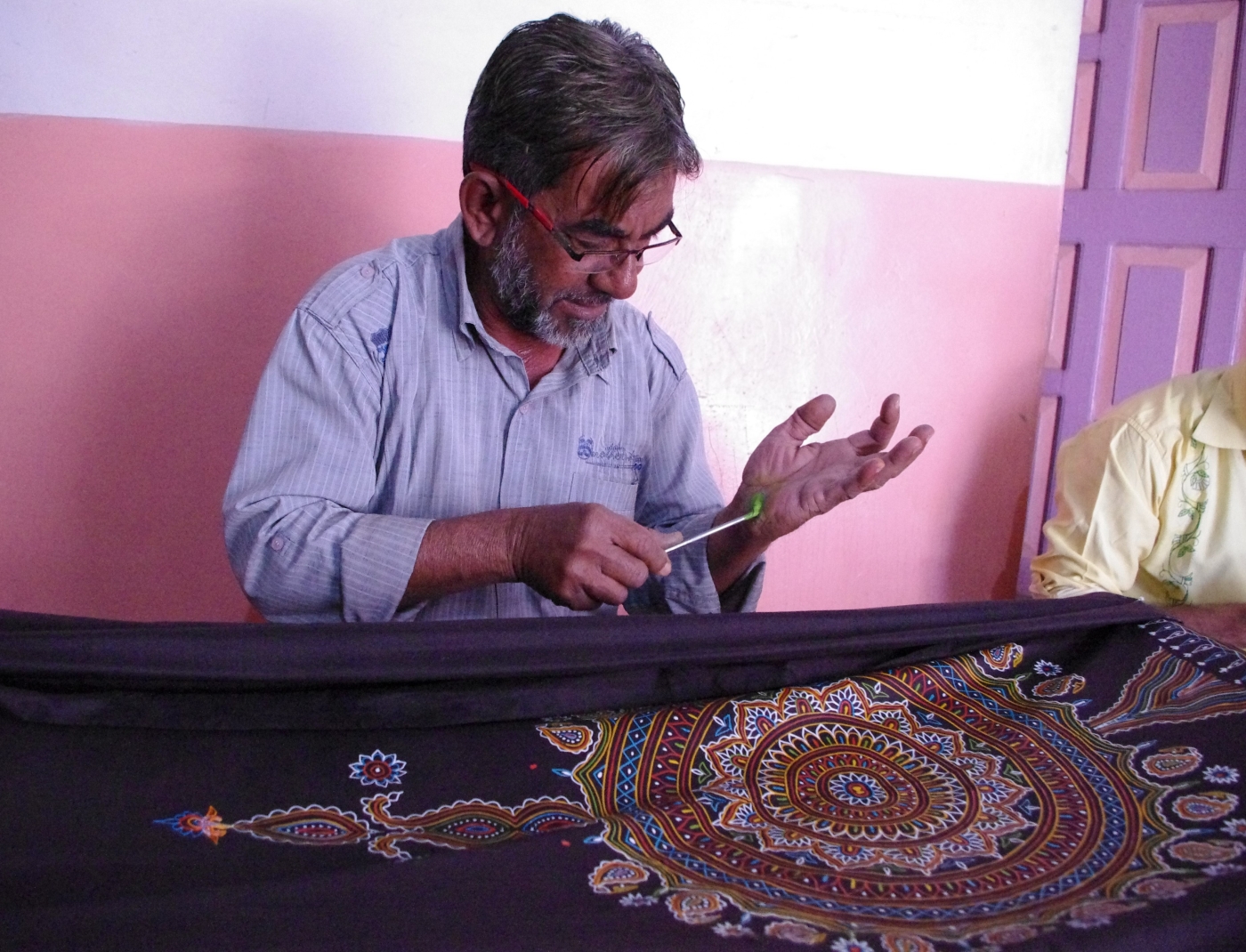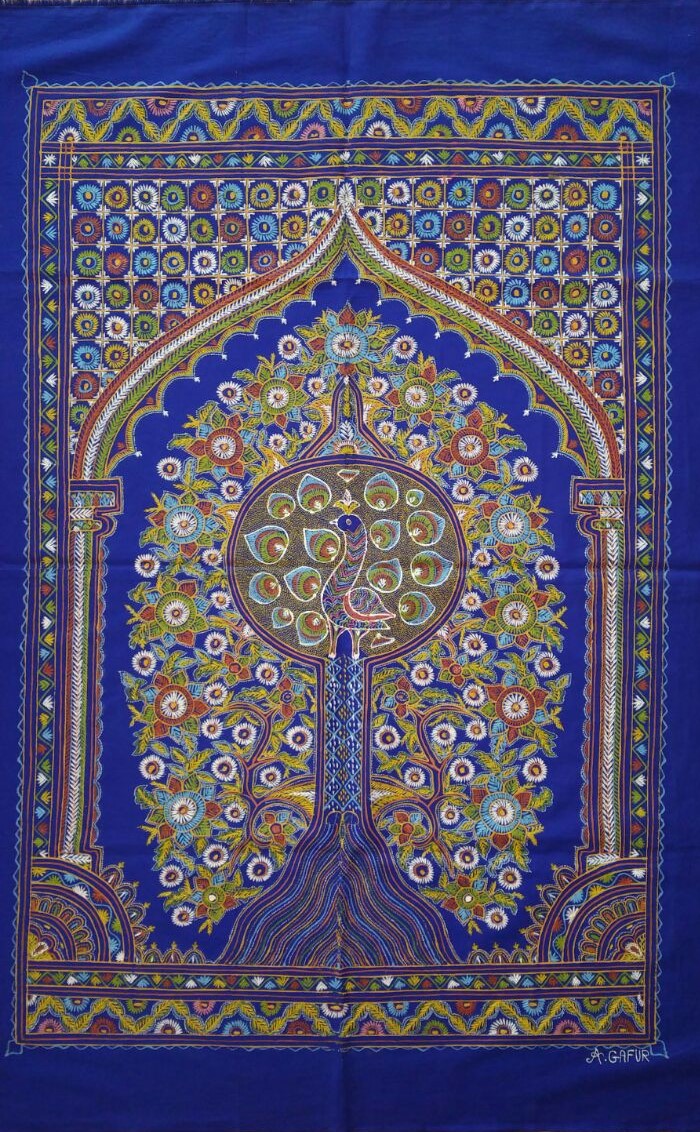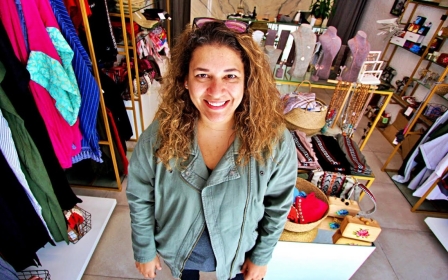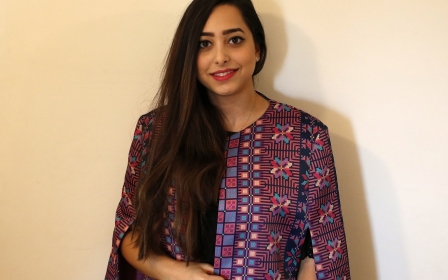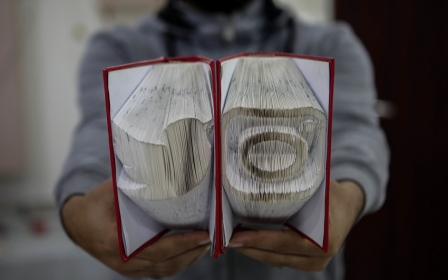From Persia to Paris Fashion Week: An ancient art kept alive by two families

In a small village in western India, members of the Khatri community spend almost every day sitting in their workshop, bent over a piece of cloth, with a needle in one hand and a thick mass of colour on the palm of the other.
They dip the needle into the colour and form long, elastic strands of jelly-like substance, with which they draw intricate patterns on a piece of cloth. Sometimes, they fold the cloth to obtain a mirror image of the motif.
During the whole process, the needle never comes in touch with the cloth.
It’s hard to imagine that this traditional art form that was almost abandoned half a century ago, was gifted by India’s prime minister to former president Barack Obama, lauded with honours by the state and recently featured at Paris Fashion Week.
New MEE newsletter: Jerusalem Dispatch
Sign up to get the latest insights and analysis on Israel-Palestine, alongside Turkey Unpacked and other MEE newsletters
The Khatris of Nirona, who call this ancient Persian art Rogan Kaam, say they have been preserving it for eight generations now, but the practice is much older, although historical records of its origins are hard to come by.
Only two families, both related to each other, are known to be doing it at present.
“Earlier it was done in three villages of Kutch. Now it’s confined to just a few of us,” says veteran Rogan artist Abdul Guffur Dawood Khatri, 54, who has been credited with reviving the art after a hiatus of 30 years.
“There may be a handful of other artists in other villages who are beginning to take up the work again, but most of them have given up due to financial constraints and lack of recognition,” he says.
Arduous task
In the Persian language, the term “rogan” means “oil”. To prepare the colour, the artists boil castor oil in a vessel for more than 10 hours, until it obtains a thick jelly-like consistency. It is then mixed with water to form a sticky paste upon which natural pigments are added to it to impart colour.
“We use charcoal, for example, to get black colour and rocks to get brown. Sometimes, we add pigment powder available in the market,” says Rizwan Khatri, 26, a young Rogan artist from the second family of artists in Nirona.
“Making colours is an arduous task,” he adds, opening the lid of a round plastic box with multiple yellow compartments for different colours.
“It takes about three days to prepare it and it dries up within 15 days. So, we have to prepare it all over again after two weeks. To prevent it from drying out sooner, we keep it soaked in water all the time.”
According to the artists, Rogan art is believed to have travelled to India around 300 years ago from what is modern day Iran. It was first brought to Sindh, now a part of Pakistan, and then to the arid villages around Nirona.
Traditionally, the artists would mostly use it on bridal clothes, creating floral patterns and thick borders with different colours.
“I still have a 40-year-old traditional ghaghra (skirt) painted by my ancestors,” Rizwan says, taking out a violet-coloured skirt painted with mustard, white and green colours, from his cupboard at his home. “These were usually worn by Rabbari women (another local community) on weddings.”
Hard labour
The art form has evolved with time as patterns have become more intricate and works expanded to include bedspreads, cushion covers, and wall hangings.
“Our ancestors used to draw very thick lines, as you can see. But if you look at our designs, they are more detailed and dense,” Rizwan says, showing the Rogan artists’ signature Tree of Life painting. He then sits on the floor and points to a geometric pattern of quadrilaterals painted on his jeans, which he says he did himself.
His father and two brothers are all involved in the craft. “My father now cannot sit for long periods and create too elaborate patterns with his weak eyesight. After the age of 50, people tend to lean towards simpler patterns.”
Rogan artists never sketch out the pattern before painting: they simply pick up the needle and start painting, mostly while sat on the floor. The motif is usually a flower, a tree, a peacock or geometric patterns. It takes about 10 days to finish a piece.
“The colour never wears out, even if you wash it,” Rizwan says.
A beginner, usually a teenager, may be expected to spend as many as 12 hours a day to learn the craft. “When I started out, I would sit half a day immersed in it. Now, I spend about six hours a day,” he says, getting a little distracted by his elder sister who is trying to shoo away a bunch of kids standing at the doorstep, cackling and occasionally shouting: “Pen do na", which translates as "Please give us the pens”.
One of them is Suleiman, the younger son of Abdul Guffur Khatri.
“I really hope he learns Rogan art when he grows up,” Abdul Guffur says. “When I was young, my family faced a lot of hardships. I did not have the opportunity to get education beyond a certain point. We were so poor.
"I would take up the job of a labourer even if they paid me five rupees (71 cents), sometimes two. Fortunately, times have changed.”
Like many Rogan artists, Abdul Guffur moved to big cities in search of financial opportunities during his youth. “There was nothing really happening in the village. People had abandoned the art. In around 1980, I moved to Ahmedabad to work at a factory. They paid me rupees 500 ($7) a month. Then I went to Bombay to take up a similar job.
“In 1985, my grandfather asked me to come back to the village as he wanted help with finishing a Rogan art project he had gotten from the government. So, I came back and never went out.”
Recognition
Earlier this year, Abdul Guffur received a Padma Shri, the fourth highest civilian honour from the Indian government for reviving and sustaining the ancient craft.
“Our ancestors mostly stayed in oblivion for most of their lives, using the art for camel herders and other nomadic communities of Kutch. My father, too, worked a number of odd jobs and found time for Rogan art in between them.
“I think it’s the culmination of these efforts that we are receiving such recognition now,” he says.
In 2014, his painting Tree of Life was gifted to former US President Barack Obama by Indian Prime Minister Narendra Modi.
Many fashion designers and students have also picked up their designs to present at international fashion events, including Paris Fashion Week. Indian designer Salita Nanda collaborated with Rizwan for her collection titled Ophelia that was showcased in Paris this year. "It's an interesting story," Rizwan recollects.
"A few fashion students had come to my workshop once to see the art form and know about its story. Later, one of them connected me to Salita Nanda that eventually paved the way for Paris. We also collaborated for Lakme Fashion Week in Mumbai two years ago."
Women included
Rogan art often adorns women's clothing - but traditionally it has been a male-only trade. “Some say that women were prevented from learning it as they would spill the secrets at another household after getting married,” says Mohammad Jabbar Khatri, a Rogan artist and a cousin of Abdul Guffur.
“But I believe they were involved in tie-and-dye work. And the rest of their time would be spent on household chores. So, they never came to learn it.”
Around nine years ago, Abdul Guffur started training girls and women in his village. “It was a huge step away from our tradition,” he says. So far he has adding that he has trained over 300 so far.
Others followed suit and began doing it with the help of local non-profits and the government.
At present, the artists hold several training programmes in different cities and villages in a year. They teach everything except the colour-making formula, which they keep secret.
So would Suleiman and Abdul Guffur’s daughter Shifa like to learn Rogan art when they grow up? When asked, they don’t say.
Suleiman is happy with the pen he has got and Shifa stands in a corner, smiling.
Middle East Eye delivers independent and unrivalled coverage and analysis of the Middle East, North Africa and beyond. To learn more about republishing this content and the associated fees, please fill out this form. More about MEE can be found here.


